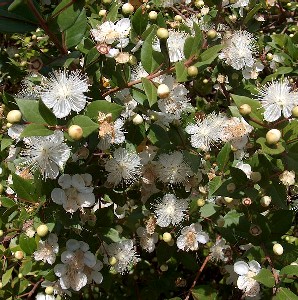
Simple Wound Care Page Menu: 1 2 3 4 5 6 <<First
Simple Wound Care in the Golden Age of Piracy, Page 6
Theories of Surgically-Based Simple Wound Care in Unbroken Skin Wounds
Richard Wiseman discusses the theory of treatment for unbroken skin wound. He begins by explaining that the "Signs of a Contusion are the black and blew colour with or

Author Richard Wiseman
without Tumour. The Causes, [are things such] as Blow, Fall, &c."1 Wiseman explains that the "danger is small, when the Contusion be such [small]"2. Framing the theory in humor theory, he advises that "whilst the Humours
[bodily fluids] are thin and fluid [in small bruises and contusions], there is hopes of returning them back [to normal], or they may be afterwards discussed [dispersed]."3 If this sounds dismissive, it is probably because most small bruises heal on their own. In fact, Wiseman rejects the idea that unbroken skin damage is a wound at all, explaining that for a skin to be considered a wound, "the Skin must be likewise divided: by which I exclude Fractures that come not through the skin, and Contusions if the exteriour Parts be continuous."4
However Wiseman does warn that "when any great Contusion happens, there the case alters and danger is often great"5. He mentions how a man with a large contusion of the leg died three days after receiving the wound. Wiseman explains that dangerous contusions, "in stead of being black, blew or green, groweth red, hard and painful, the danger is eminent" indicating that such wounds can turn gangrenous.6
In cases where a serious contusion accompanies broken skin, the surgeon "must endeavour the turning what is contused into Pus or Matter, which must be performed before there can possibly be any Re-union [of the broken skin]."7 Although he doesn't specify this treatment for unbroken skin wounds as well, taken with his previous statements on the dangerous nature of some of these wounds, it is logical that he would have advised the same treatment in such cases.
1,2,3 Richard Wiseman, Severall Chirurgicall Treatises, 1676, p. 67; 4 Wiseman, p. 339; 5 Wiseman, p. 340; 6 Wiseman, p. 67; 7 Wiseman, p. 340
Unbroken Skin Wound Care - Minor Bruises

Artist: Howard Pyle - Examining a Bruised Man (1895)
The cure of unbroken skins wounds seems refreshingly simple compared with all the steps and substeps involved in broken skin wound care.
As Richard Wiseman indicated previously, minor unbroken skin wounds didn't required a great deal of surgery. Sea surgeon John Moyle advises that when "a Man hath got a bruise, and it is but superficial, whether of the Limbs or any other part, 'tis cured by embrocating [rubbing it] Hot, and often with Oyl of Hypericon [oil of St. John's wort] and applying a Paracelsus [plaster], or Opodeldoch Plaister"1. For those interested, Opodeldoch is an intricate plaster containing a wide variety of simple herbs and elements (including amber, bdellium, colcothar, dragon's blood, frankenense, galbanum, gum ammoniac, mastic, myrrh, opoponax, pitch resin (colophony), sagapenum, saffron of mars (hematite) and sarcocolla) and herbal oils (including oils of amber, bays, linseeds and olives) mixed with yellow beeswax, turpentine and calamine.2
Fellow sea surgeon John Woodall had a slightly different recommendation for superficial bruises. He advised that they only require "easie comfortation [comforting], and desiccation [drying], and no suppuration [encouragement of pus]"3. Woodall doesn't even specify any particular medicines for this purpose, leaving the choice to the reader.
1 John Moyle, Abstractum Chirurgæ Marinæ, 1686, p. 60-1; 1 See John Quincy, Pharmacopoeia Officinalis, Extemporanea, 1772, p. 521; 3 John Woodall, the surgions mate, 1617, p. 130
Unbroken Skin Wound Care - Major Bruises
However, there were more challenging bruises that required attention.

Photo: Wiki User Ribelle2289
A Severe Bruise on the Upper Leg
Moyle explains that when a wound "is deep, and the Vessels distorted, and the Muscles bruised and writhen [twisted out of their normal shape], so that there is blood lying deep between the Muscles 'tis dangerous."1 It was on these types of unbroken skin wounds that the surgeons focused their attention during the golden age of piracy.
For more serious contusions, Wiseman says, "The cure of of a Wound is the Exsiccation [drying] of it. But here is always joyned with these that which indicateth the use of emollientia [softening medicines] and suppurantia [medicines that encourage the formation of pus]: according to that of Hippocrates... What is contused must necessarily putrifie, and be turned into matter."2 French surgeon Ambroise Paré likewise cites Hippocrates, who advised that "every contused wound to be presently brought to suppuration, for so it will be lesse subject to a Phlegemon [inflammation]; and besides, all the rent & bruised flesh must putrefie, dissolve and turn to quitture [a discharge], [so] that new and good flesh may be generated in stead thereof."3
With Hippocrates so squarely behind this treatment plan, the general consensous for treating serious contusions seems to have followed. Paré noted that contused wounds were more difficult to cure than broken skin wounds "for before you must thinke to heale them up, you must supperate [cause them to generate pus] and clense them; which cannot be done in a short time."4 Various suppurating medicines were used to cause pus to be formed. For a contusion, Moyle recommended a cataplasm (poultice): "Rx. Unguent. Basilic. Major. De Mustagia.5 Empl. Melilot. symp. q. s. misce. [mix as much as is sufficient] fiat Cataplasma [making a cataplasm]"6. Moyle says there isn't a better cataplasm "to bring any manner of Tumour to digestion [turning the corrupt humors into pus]; besides, 'tis made in an instant."7
Once this cataplasam is made, Moyle recommends heating it and apply it daily "till you see the Tumor rise fairly for a head; and when you see its ready, stay [wait] not for its breaking, but open it by incision, in the depending part to let out the abundance of goary matter"8. His choice for opening the tumor in the 'depending part' is a little unclear, but it probably refers to an area as close to the edge of the bruise as possible.
This is based on Hippocrates' recommendation that cataplasms used to cause suppuration,

Photo: Giancarlo Dessi - Myrtle Flowers
"should not be applied to the sore itself, but to the surrounding parts, so that the pus [generated by it] may have free exit"9. When the pus has been drained, Moyle says "cleanse it with that excellent Lotion, Spiritus vini vitriolati."10
Fellow sea surgeon John Woodall uses several humor-based treatments for deep [under the skin] bleeding in contused wounds, explaining that such wounds "requireth purging glisters [clysters or enemas], [purging] potions, or pills [such as emetics to induce vomiting], phlebotomie [blood-letting], a wholsome dyet [to encourage the generation of desireable bodily humors], [and] perfect evacuation of the humor that commeth from the veines"11. Like Moyle, Woodall also suggests suppurating the wound. This is also a humor-based treatment since pus was believed to be the 'discussing' or 'reducing' of corrupted humors located at the wound site so that the wound could be relieved of them. Woodall recommends generating pus with what he calls 'mean' (gentle) suppurating medicines including oil of roses, oil of myrtles "and sometimes by a Paracelsus plaster."12
Ambroise Paré has quite a lot to say about medicines in such cases. He suggests a couple of medicines to prevent 'putrefaction' which was said to cause gangrene including camphor and aqua vitae combined with burnt vitriol. He specifically recommends against the use of astringents (cleansing medicines) which he says "constipate the skin, which is the cause, that the putrid vapours shut up and hindred from transpiration [being sweated out] and passage forth, a gangrene and mortification [sphacelation or death] easily seize upon the part."13 He further notes that when the sound areas around the wound need to be covered with "refrigerating and strengthening medicines, so to hinder the falling down and setling of the humor in that part". His prescription for such a medicine is:

Scarification, From De Medicina Aegyptiorum,
By Prospero Alpini. p. 198 (1591)
Rx. pul boli. Armen. [powdered Armenian bole] sanguin. Dracon. [powdered dragon's blood] Myrrhæ, {of each 1 ounce} succi solan. [juice of solanum plants] sempervivi [juice of Mamillaria sempervivi], portaluc. [juice of purslane] {of each 1.5 ounces} album iiij. Ovorum [4 egg whites] oxyrhodin. [vinegar of roses and oil of roses combined] Quantum sufficient [as much as needed]; fiat linimentum, ut decet. [make into a liniment.]14
Paré also advises a humor-based treatment: scarification. This involves making a series of incisions in the skin so that blood may be let at a chosen location. He recommends this procedure when the contusion be great and diffuse [widespread] it self more largely over the flesh, the part must be scarified; that so the contused and concreat blood, and therefore subject to purtrefaction, may be evacuated."15 There does seem to be a certain intuitive logic to releasing blood trapped beneath the surface of the skin, although Paré is the only author under study to recommend it here; other authors save this procedure for contused wound that become gangrenous.
1 John Moyle, Abstractum Chirurgæ Marinæ, 1686, p. 61; 2 Richard Wiseman, Severall Chirurgicall Treatises, 1676, p. 409; 3 Ambroise Paré, The Workes of that Famous Chirurgion Ambrose Parey, 1649, p. 318; 4 Paré, p. 253; 5 'de Mustagia.' means "of Mustagia", which in this context usually refers to the person whose book contains the prescription.. With the spelling (and understanding) of names (particularly foreign names), being rather fluid during this time, it likely refers to an Arabic pharmacopoeia, possibly Masawaih al-Mardini's (Mesue the Younger's) Antidotarium sive Grabadin medicamentorum, which was popular with English physicians and surgeons; 6,7,8 Moyle, p. 62; 9 Hippocrates, On Ulcers, p. 146; 10 Moyle, p. 62 - Moyle insists on using unusual medicines in this entry - In his treatis on gunshot wounds, French surgeon Ambroise Paré advises, "Some drop into the Wound aqua vitæ [spirit of wine], wherein they have dissolved some calcined [burnt] vitriol." (Paré, p. 319) This is most likely what Moyle is referring to. Spirit of wine was known for its curative properties while spirit of vitriol had a wide variety of ascribed properties which included healing and stopping bleeding.11 John Woodall, the surgions mate, 1617, p. 130-1; 12 Woodall, p. 131; 13,14,15 Paré, p. 319
Unbroken Skin Wound Care - Gangrene
Moyle discusses a complication that can occur when treating deep bruises, noting that even after treatment is underway, the patient's pain may still increase. If htis occurs, the surgeon is to "bring it to maturation [bring the pus to a head] as soon as possible, for if you cannot do this, there will be a Gangrene"15.
Gangrene is the ultimate complication in such wounds and both Moyle and Woodall talk about what to do when it seems likely. Woodall recommends "the use of a good Lixivium [a potential cautery used to burn the skin], of cupping glasses,

Photo: Jean-Baptiste Dudry - Cupping (18th c.)
and light scarification [making incisions about the wound and then using the cupping glasses to create a vacuum over the incisions to draw out contused and 'corrupted' blood], is most necessary, that the humour about to putrifie [turn gangrenous] may be evacuated, so shall the wound be better cured"16.
Moyle advises that when gangrene seems imminent in a bruise, the surgeon should
let [the patient] blood as soon as you have Embrocated it with hot Oyl of Hypericon, and applied your Emplaister [the plaster recommended during normal treatment above], both about the contused Muscles and likewise about the distorted or sprained Joynt, and be sure that you make plentiful Phlebotomy [bleeding], for that will be a great help; and let the wound-drink [a drink Moyle suggested helped the patient to recover when wounded] be drank plentifully, and that is another good help. Bathe and stuff the part well and hot (likewise) with spiritus vini communis17, let this be done often, and let your hot Oyl and Emplaster be not only once a day (as is usual) but if you mean to save a mans Life or Limb, let them be often apply'd."18
Both Woodall's and Moyle's procedures for preventing gangrene rely on bleeding the patient with the idea of excising the corrupted blood that was believed to cause gangrene in unbroken skin wounds. Woodall perfoms bleeding near the wound site, while Moyle appears to rely on regular bleeding through opening a vein.
1 John Moyle, Abstractum Chirurgæ Marinæ, 1686, p. 62; 2 John Woodall, the surgions mate, 1617, p. 131; 3 'Common' spirit of wine, apparently to differentiate it from his other suggestion; 4 Moyle, p. 61-2

